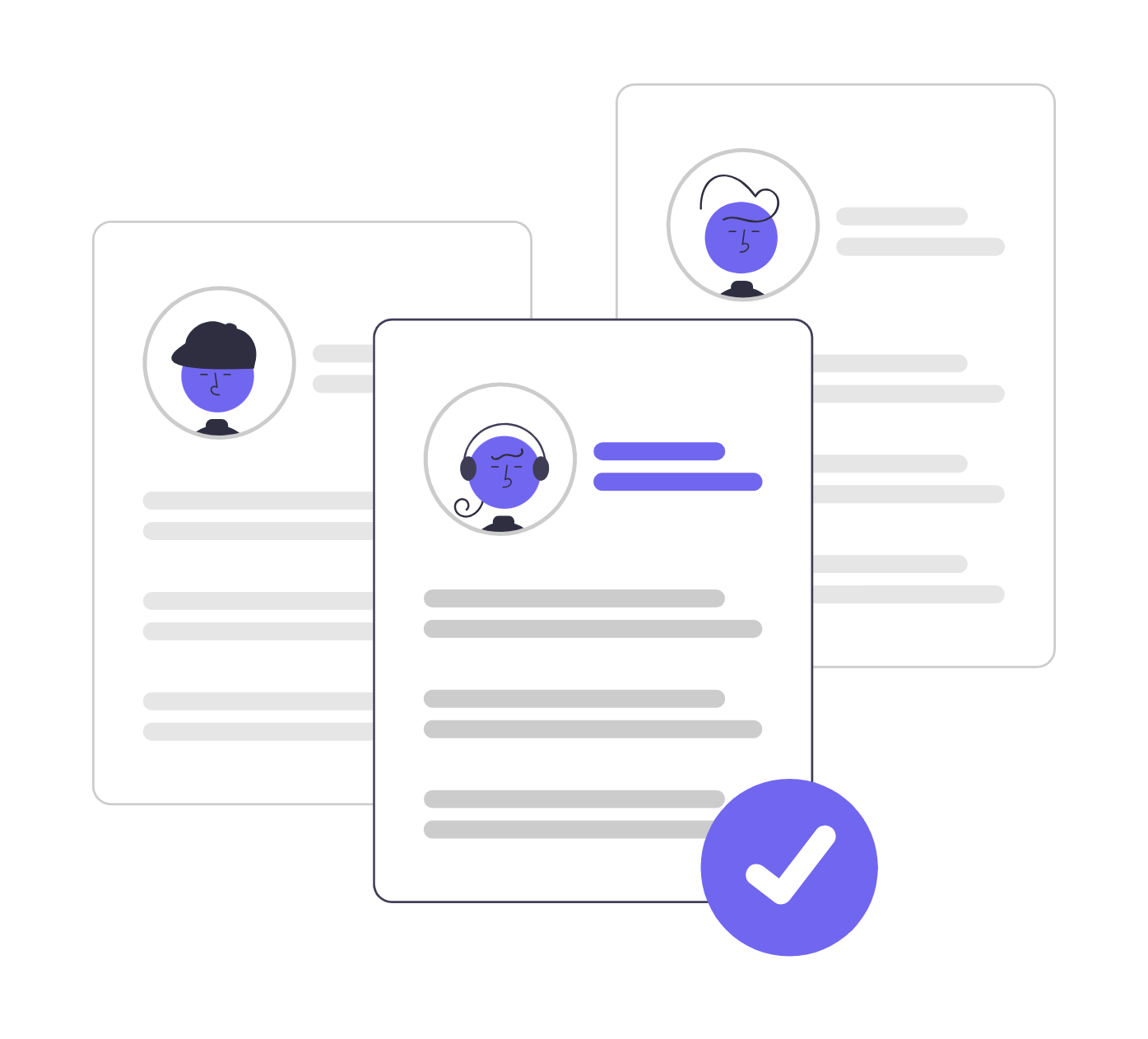Share
In today’s hiring landscape, where speed and precision matter more than ever, relying on gut instinct alone is no longer enough. If you’re still measuring success by how many résumés you review or how fast you send out an offer, you’re missing the bigger picture.
Recruitment metrics are more than numbers—they’re your roadmap to smarter, faster, and more consistent hiring. They reveal bottlenecks in your process, expose weaknesses in your candidate experience, and give you a data-backed way to continuously improve.
In this guide, you’ll learn:
- What recruitment metrics actually are (and what they’re not)
- Which ones matter most—and why
- How to use them to drive real change in your hiring strategy
Let’s dive in.
What Are Recruitment Metrics—and Why They Matter More Than Ever
Recruitment metrics are data points used to measure the effectiveness of your hiring process. They track everything from how long it takes to hire someone to how well that person performs once hired.
And they’re not just for large HR teams. Whether you’re a solo recruiter or leading talent acquisition at a growing company, metrics help you:
- Diagnose process inefficiencies
- Improve candidate quality and fit
- Optimize costs and time
- Build accountability and alignment with leadership
In short: metrics take hiring from reactive guesswork to proactive, strategic execution.
“Hiring without metrics is like running a business without a budget or a roadmap. You might get somewhere—but it probably won’t be where you need to go.”
Quickly identify your most promising candidates. WorkScreen automatically evaluates, scores, and ranks applicants on a performance-based leaderboard—making it easy to spot top talent, save time, and make smarter, data-driven hiring decisions.

The Core 8 Recruitment Metrics Every Hiring Team Should Track
These are your foundational KPIs. If you track nothing else, track these.
1. Time to Hire vs. Time to Fill
- Time to Fill = Days from job posting to accepted offer
- Logistics - Forklift operators, inventory technicians, dispatchers, and warehouse assistants
Why it matters: A long time-to-hire often signals internal delays or decision fatigue. Time-to-fill, on the other hand, can highlight problems with job visibility or candidate engagement.
2. Cost per Hire
- Formula: (Internal + external recruiting costs) ÷ number of hires
This includes job ads, recruiter salaries, agency fees, tools, and onboarding costs.
Why it matters: It helps you budget smartly and determine which recruiting channels give you the best return.
3. Offer Acceptance Rate
- Formula: (Number of accepted offers ÷ total offers extended) × 100
Why it matters: A low acceptance rate can point to issues with compensation, candidate experience, or brand perception.
4. Quality of Hire
No universal formula—but most combine:
- New hire performance reviews
- Retention after 90 days or 1 year
- Hiring manager satisfaction
Why it matters: This is the ultimate test of hiring success. Did the hire actually add value?
Easily administer one-click skill tests with Workscreen-This way you can assess candidates based on real-world ability—not just credentials like résumés and past experience. This helps you hire more confidently and holistically.

5. New Hire Turnover & First-Year Attrition
- First-Year Attrition = (Number of new hires who left within 12 months ÷ total hires) × 100
Why it matters: High early turnover often reflects poor role clarity, bad onboarding, or culture mismatch.
6. Candidate Net Promoter Score (cNPS)
- Formula: % of promoters – % of detractors
Ask candidates: “How likely are you to recommend our hiring process to a friend?”
Why it matters: Your candidate experience affects not just hiring outcomes, but your brand and future talent pool.
7. Application Completion Rate
- Formula: (Completed applications ÷ Started applications) × 100
Why it matters: A low rate usually means friction—long forms, unclear instructions, or mobile-unfriendly applications.
8. Sourcing Channel Effectiveness
- Formula: (Number of hires from a source ÷ Total applicants from that source) × 100
Why it matters: Helps you invest in the most effective channels—and drop the rest.
Advanced Metrics for High-Performance Hiring Teams
These go beyond the basics and offer deeper visibility into process health and long-term outcomes.
1. Recruiting Yield Ratio
- Formula: (# of candidates who move from Stage A to Stage B) ÷ Total in Stage A
Why it matters: Shows how efficiently candidates are progressing through your funnel.
2. Rejection Rate
- Formula: (Rejected applicants ÷ Total applicants) × 100
Why it matters: High rejection rates might mean misaligned job ads or ineffective sourcing.
3. Selection Ratio
- Formula: (Hires ÷ Total applicants) × 100
Why it matters: Indicates how competitive and targeted your job openings are.
4. Hiring Manager Satisfaction
Collected via surveys or feedback forms post-hire.
Why it matters: Ensures alignment between recruiter and business goals—crucial for repeatable success.
5. Retention Rate by Source or Recruiter
Track retention by the channel or recruiter responsible.
Why it matters: Some sources may produce longer-lasting hires, and some recruiters may need coaching.
How to Use These Metrics to Actually Improve Hiring
Too many teams collect data—and do nothing with it. Here’s how to change that.
Use Metrics to:
- Uncover bottlenecks: e.g., if candidates drop off between 2nd and 3rd interviews, is that round too long or repetitive?
- Refine sourcing strategy: prioritize high-yield, low-cost channels
- Build internal trust: share hiring manager satisfaction and quality-of-hire data with leadership
- Improve DEI outcomes: Track demographic passthrough rates and investigate where drop-offs occur
Workscreen Eliminates low-effort applicants—including those who use AI Tools to apply, copy-paste answers, or rely on "one-click apply." This way, you focus only on genuine, committed, and high-quality candidates—helping you avoid costly hiring mistakes.

Common Pitfalls (And How to Avoid Them)
❌ Focusing on Vanity Metrics
Don’t obsess over total applications if none convert.
❌ Measuring Without Context
Time-to-fill is meaningless unless paired with quality or retention data.
❌ Collecting But Not Acting
Metrics are only valuable if they lead to decisions.
❌ Ignoring Data Quality
Dirty data = flawed conclusions. Make sure your ATS is clean and your inputs consistent.
Tools That Help (Without Adding Complexity)
While spreadsheets can get you started, most growing teams benefit from:
- An ATS with automated reporting
- Dashboards that track pipeline health in real time
- Integration with sourcing and feedback tools to ensure all data lives in one place
Final Thoughts: Metrics Don’t Replace Instinct—They Sharpen It
Data doesn’t make decisions for you—but it gives you the clarity and confidence to make better decisions. When used correctly, recruitment metrics can be your team’s secret weapon—not just to hire faster, but to hire right.
The best hiring teams don’t just move fast. They move smart. And metrics are how they do it.
FAQ
A metric is any data point you track during the hiring process. A KPI is a goal-oriented metric tied to hiring outcomes. All KPIs are metrics, but not all metrics are KPIs.
Top metrics for assessing quality include:
- Quality of hire
- Hiring manager satisfaction
- First-year attrition rate
- Candidate NPS
These metrics reflect long-term fit and overall hiring effectiveness.
Volume metrics inflate recruiter activity but rarely reflect candidate quality. They often encourage mass outreach and wasted effort, instead of focused, outcome-driven recruiting.
Metrics like drop-off rate by demographic, passthrough rate by stage, and diversity ratios at offer stage can reveal where bias may be creeping in—helping you adjust and improve fairness.
Yes. WorkScreen.io automatically tracks candidate progress, scores applicants based on performance, and highlights conversion bottlenecks—so you focus only on high-potential candidates.

